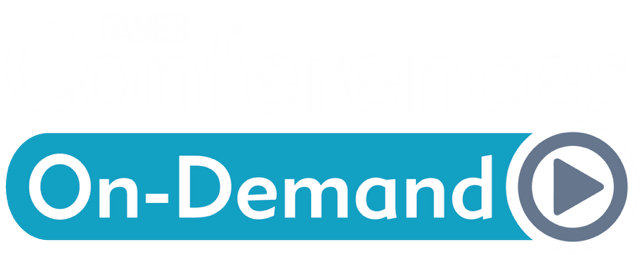All transcripts were created with artificial intelligence software and modified with manual review by a third party. Although we make every effort to ensure accuracy with the manual review, some may contain computer-generated mistranslations resulting in inaccurate or nonsensical word combinations, or unintentional language. FASEB and the presenting speakers did not review the transcripts and are not responsible and will not be held liable for damages, financial or otherwise, that occur as a result of transcript inaccuracies.
ROS and TLR Signaling Balance "Eat Me" and "Don’t Eat Me" Signals to Determine Stem Cell Clonal Selection by Macrophages
Cecilia Pessoa Rodrigues1,2, Song Yang2, Leonard Zon1,2
1Harvard Stem Cell Institute, Stem Cell and Regenerative Biology Department, Harvard University, Cambridge, MA, USA.
2Howard Hughes Medical Institute, Boston Children’s Hospital Boston, MA, USA.
Macrophages quality assure normal blood stem cells and determine the number of hematopoietic clones that participate in
adult hematopoiesis. Macrophages either engulf a stem cell completely (referred to as dooming) or capture portions of the
stem cell's cellular material (referred to as grooming). In the latter case, the stem cell continues to divide. This interaction is
mediated by a signal called calreticulin (CALR) on the surface of hematopoietic stem and progenitor cells (HSPCs), known
as an eat-me signal. Surface CALR levels are increased in stem cells with higher levels of reactive oxygen species (ROS),
but the specific molecular cues that regulate the dooming versus grooming behavior are still unknown. To investigate this,
we screened a panel of 1200 bioactive small molecules in human cells and identified 93 compounds that robustly increased
surface CALR in a dose-dependent manner. Of these compounds, 22 also facilitated interactions between macrophages
and stem cells in zebrafish (mean control: 0.31; ROSdependent: 0.56; p<0.0001 and ROSindependent: 0.52; p=0.0006). We
examined the behavior of macrophages after CALR-inducer treatment. Compounds that depended on ROS to increase
CALR showed higher dooming ratios, indicating an effective quality control mechanism. Conversely, animals treated with
ROSindependent compounds exhibited a higher probability of grooming events (chi-test: 0.0072), despite increased CALR and
increased macrophage-stem cell interactions. To investigate the signals involved in interactions under ROSindependent
conditions, we assessed the levels of canonical don't eat me signals after treatment with ROSindependent compounds. This
analysis revealed an enrichment upon treatment of b2-microglobulin (B2M), an essential component of the major
histocompatibility complex class I. Antibody staining, and knockout experiments in a new zebrafish mutant in b2m confirmed
its importance in preventing the dooming phenotype. To evaluate if the increased dooming observed in the B2m mutant
affected clonal dominance, we generated mosaic deletions using the zebrabow color barcoding system (TWISTR) as a
lineage tracer. Mosaic deletion of b2m significantly reduced the number of myeloid clones (22 versus 8, p=0.0016), but
increased clonal dominance (Gini coefficient: 0.36 versus 0.6792). These dominant clones in these fish were wild-type for
B2M that were resistant to dooming and overtook the adult marrow. IRF3 and TLR3 are upstream of MHC-I expression.
Knockdown of irf3 or tlr3 in zebrabow embryos also reduced the number of myeloid clones (15 vs 8 and 7 clones, p<0.0001)
while increased clonal dominance. Preliminary analysis for irf3 mutations shows wild-type clonal dominance showing a
competitive disadvantage of the IRF3 targeted stem cells, similar to the B2M mutant stem cells. B2m levels positively
correlated with isg15 reporter expression that is a reporter for type I interferon signaling. Treatment with PolyI:C, a dsRNA
mimic, facilitated grooming (p=0.0013), suggesting that dsRNA promotes the grooming behavior. Forced expression of
endogenous retroviruses and transposable elements typically activated by interferon also elevated b2-microglobulin levels
and promoted grooming. This suggests that homeostatic endogenous retrovirus stimulation mediates B2m expression. To
complement these studies, we performed a CRISPR-Cas9 knockout screen in K562 cells to find the molecular cues
modulating surface CALR under a don’t eat me context. We used the DL-threo-PPMP, a glucosylceramide synthase
inhibitor, to stimulate CALR independent of ROS, causing the grooming outcome. We identified 3169 sgRNAs enriched
(p<0.05) specifically under the don't eat me context. Among the targets, we found a significant enrichment of genes
associated with cytosolic DNA/RNA sensing and viral immune response, such as TLR3 (b=0.76) and HLA-F (b=0.9).
Knockdown of tlr3 using morpholino reduced CALR and b2-microglobulin levels in vivo and facilitated dooming, determine
that the balance of cellular behaviors between the eat-me and don't eat-me signals. Our findings support a model in which
endogenous TLR3 ligands causes expression of b2-microglobulin, thereby providing a blockade against macrophage-
induced dooming and determining hematopoietic stem cell clonality by monitoring stem cell quality with macrophages.
National Institutes of Health: 5T32HL007574-40
Speakers
Cecilia Pessoa Rodrigues
